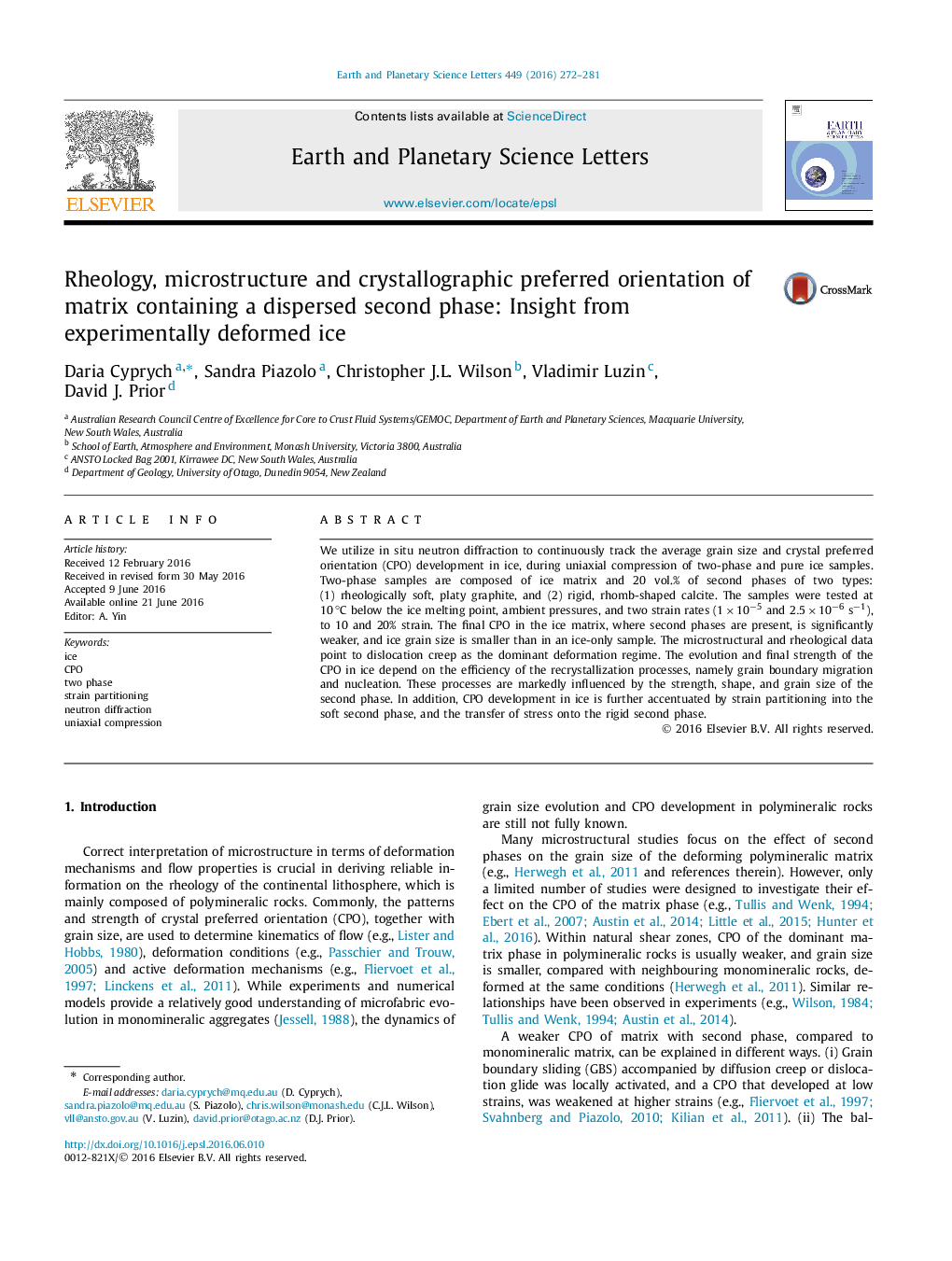| Article ID | Journal | Published Year | Pages | File Type |
|---|---|---|---|---|
| 6427395 | Earth and Planetary Science Letters | 2016 | 10 Pages |
â¢Crystal preferred orientation (CPO) evolution in deforming two-phase material.â¢The presence and type of second phase affects CPO development in the matrix.â¢CPO strength is related to grain boundary migration and nucleation efficiency.â¢Stain partitioning and load transfer onto second phase affects CPO strength.â¢Weak CPO in matrix with second phase does not require grain boundary sliding.
We utilize in situ neutron diffraction to continuously track the average grain size and crystal preferred orientation (CPO) development in ice, during uniaxial compression of two-phase and pure ice samples. Two-phase samples are composed of ice matrix and 20 vol.% of second phases of two types: (1) rheologically soft, platy graphite, and (2) rigid, rhomb-shaped calcite. The samples were tested at 10â°C below the ice melting point, ambient pressures, and two strain rates (1Ã10â5 and 2.5Ã10â6sâ1), to 10 and 20% strain. The final CPO in the ice matrix, where second phases are present, is significantly weaker, and ice grain size is smaller than in an ice-only sample. The microstructural and rheological data point to dislocation creep as the dominant deformation regime. The evolution and final strength of the CPO in ice depend on the efficiency of the recrystallization processes, namely grain boundary migration and nucleation. These processes are markedly influenced by the strength, shape, and grain size of the second phase. In addition, CPO development in ice is further accentuated by strain partitioning into the soft second phase, and the transfer of stress onto the rigid second phase.
